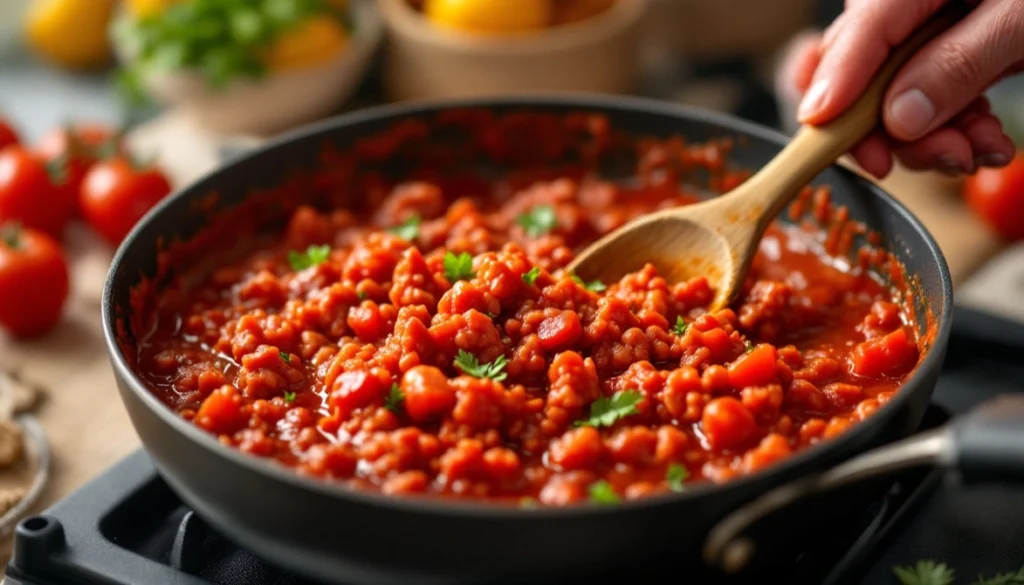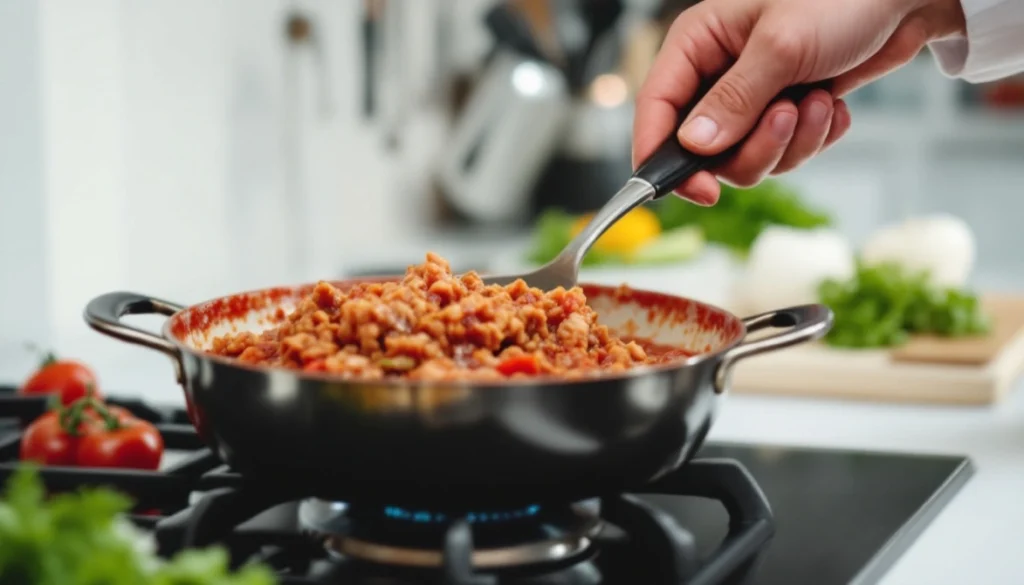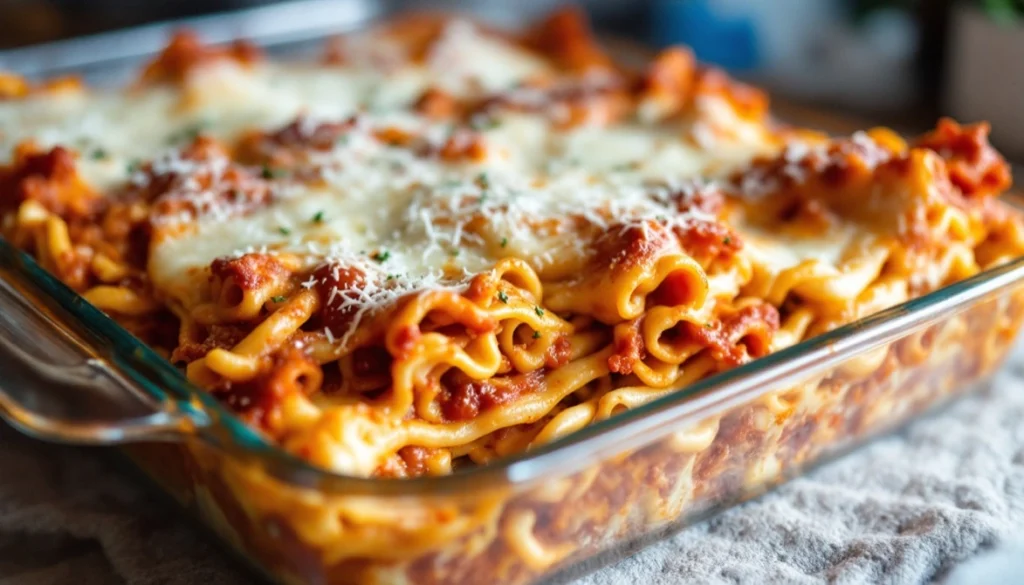Mastering the Art of Layering Lasagna: A Simple Guide
Lasagna is among the most loved comfort foods. It is known for its delicious flavor and delicious layers. However, making the best lasagna is more than simply mixing ingredients. Being aware of what is the best method of layering lasagna is vital to create an item that is visually appealing and delicious. We’ll take you through the essential steps, techniques for layering and techniques to ensure the lasagna you make is flawless every time.
Why Layering Order Matters
The method of layering lasagna isn’t only about appearance. It is a major factor in the way that the dish cooks as well as how it tastes. Each layer serves a distinct function:
- The sauce layer at the bottom: This prevents the noodles from sticking, and also ensures that they remain moist when they bake.
- Layers that alternate: Achieving that every component — noodles sauce, cheese and fillings–has its own space and creates an even taste in every bite.
- Top layer This layer, made of cheese and sauce adds the perfect golden crust that is irresistible.
Making sure the layers are right will ensure that your lasagna will have the perfect texture, featuring soft noodles, creamy cheese, and flavorful.
Step-by-Step Process for Layering Lasagna
To create the perfect lasagna Follow these steps:

- Beginning with Sauce: Then, start with an even layer that you spread all over the entire bottom of the dish. This will prevent that the noodles stick together and makes a moist base.
- Include noodles Lay a thin layer on top of the sauce. Make sure they don’t overhang too much. Trim the noodles if needed to make them make them fit into the dish.
- Spreading cheese Sprinkle a large layer of ricotta cheese, or an assortment of cheeses. Use a spatula or a spoon to make it spread uniformly.
- Fillings can be added: Sprinkle your choice of fillings – ground meat, sausage or other vegetables over the layer of cheese. Make sure it’s evenly distributed.
- Repeat: Continue layering sauce noodles, cheese and fillings until the dish is nearly filled.
- Serve with cheese and sauce: Finish with a final layer of sauce and a generous layer of mozzarella shredded and parmesan. This layer will bake until it forms the golden color.
If you follow these steps, you’ll be able to easily determine which is the best way to put lasagna in and make an excellent dish that is balanced and delicious.
Tips for Perfect Layers
Here are some suggestions that will make the layers more appealing:
- even spreading Make use of tools such as an ice cube for sauce, or spatulas for cheese to evenly distribute each layer. This ensures consistency in cooking and gives the dish a distinct flavor.
- Beware of filling too much: Don’t overload the dish with fillers, because this could make the layers unstable and alter the cooking time.
- Make sure you have sufficient sauce to cover the noodles: The noodles must be covered with sauce in order to ensure they stay damp and stop them from drying out in baking.
Common Layering Variations
While the standard method is widely used but there are a variety of variations to consider:
- Vegan lasagna Substitute meat using mushrooms, spinach or zucchini to make a lighter meal.
- Gluten-free alternatives: Swap noodles for thinly cut vegetables such as squash or zucchini.
- Base of bechamel: Some Italian recipes make use of bechamel sauce instead Ricotta to give a rich texture.
With a variety of methods to make your lasagna according to your tastes and preferences.
Final Thoughts
Understanding the right way to layer lasagna is essential to success. If you follow the correct techniques and a little practice, you’ll be able to create an exquisite lasagna every time. Be open to experimenting with new ingredients and layers. In the end, the fun of cooking is in making every dish unique. If it’s an intimate dinner party or the occasion is special your lasagna layered dish will be a hit around the dinner table!
Understanding the Basics of Lasagna Construction
The Essential Components of Lasagna
Lasagna is comprised of three major components that are sauces, noodles and cheese. Each of these plays a major part in the dish.
- Pasta There are two options: lasagna noodles that are regular as well as boiling noodles that are not cooked. Regular noodles must be cooked prior to cooking. The noodles that are not boiling save time and prepare in ovens.
- Sauces Sauces made from tomatoes are essential. It can be marinara sauce, meat sauce or a vegetarian version. Many recipes also contain bechamel sauce that is smooth and creamy.
- Cheese: Cheese makes lasagna special. Make use of ricotta to add creaminess, mozzarella to create an elastic texture, and then parmesan for strong flavor. Together, they make an amazing, creamy layer.
The Importance of Layering Order in Lasagna
The how you layer your lasagna is important. It can affect the texture and taste.
- What effect does proper layering have on the texture and flavor: If you layer incorrectly it could cause the noodles to become wet or the top may dry out. In the right order, the food cooks properly and tastes fantastic.
- Common mistakes to avoid: Skipping the bottom layer of sauce can be an error that is costly. It could cause noodles to stick. The use of too much filling may cause an uneven cooking.
Knowing these fundamentals will be the initial step. The next step is to review the proper order to stack lasagna.

Step-by-Step Guide to the Correct Order of Layering Lasagna
Preparing Your Ingredients
Before layering, you must make sure that you have your ingredients in order. Making everything ready will help make the process easier.
- Cooking Noodles until Al Dente If using lasagna noodles of regular size cook them until al in the middle. That means they need to be firm, but not too hard. You should drain them thoroughly to ensure that there is no water left in your lasagna.
- Preparing Sauces If you’re preparing the meat sauce or vegetarian marinara make sure that it’s flavorful and rich. To add creaminess, think about making bechamel sauce.
- Cheese Mixtures Combine ricotta with a little salt pepper, salt, and egg to create a creamy taste. Grate mozzarella and Parmesan for the layers. Keep them handy for a smooth assembly.
Layering Process Explained
Let’s now answer this question. How do I determine the proper order to stack lasagna? Following this process assures that the dish cooks evenly and is delicious.
- Beginning with Sauce Start by spreading thin layers of sauce over the bottom of the baking dish. This will prevent that the noodles stick, and keeps the bottom damp.
- The First Layer Noodles’ Placement: Lay the noodles on top of the sauce. Be sure that they don’t cross too significantly. If necessary cut them down to make them fit in your dish.
- The second layer is a cheese mix Spread a thick layers of ricotta blend over the noodles. Make use of a spatula or spoon to ensure a uniform coverage.
- The Third Layer: fillings Include your preferred filling like cooked ground beef, sausage or even vegetables. Then, evenly distribute it for a consistency in flavor.
- Repetition Layers Repeat the steps in alternating between sauces noodles, cheese, and fillings. Continue until the dish is nearly full.
- Last Layer The noodles should be topped with a heavy layers of sauce. Sprinkle mozzarella and parmesan liberally to give an elegant, bubbly golden crust.
If you adhere to this method and following this recipe, you’ll get an attractive lasagna that’s visually appealing as well as packed with delicious flavor.
Variations in Lasagna Layering Techniques
Traditional Italian Methods
Traditional lasagna recipes are based on simpleness and harmony. They make use of high-quality ingredients and the classic order of layers.
- Bechamel Sauce as a substitute Of Ricotta Italian lasagna usually substitutes ricotta for bechamel. The creamy white sauce provides smooth texture and a mild buttery flavor.
- Incorporating spinach and other greens: To add a healthier spin, a lot of Italian recipes contain the spinach and Swiss chard. The greens are then layered with cheese to provide extra nutrition and hue.
Modern Twists on Lasagna Layering
If you are a fan of experimentation there are a myriad possibilities to make a contemporary take on lasagna.
- Gluten-Free and vegan layering options: Swap regular noodles for gluten-free noodles or substitute slices of zucchini or eggplant instead. To make a vegan version you can use plant-based cheeses and sauces.
- Creative additions: You can get inventive with ingredients like Alfredo sauce, pesto as well as goat cheese. These unique flavors give your lasagna a fun twist.
If you are able to understand both modern and traditional methods, you can tailor your lasagna to meet your personal preferences. Making experiments with different techniques ensures that every dish is exciting and fresh.
Common Questions About Lasagna Layering
What is the Correct Order to Layer Lasagna?
Finding the proper order to layer lasagna in the correct order is vital to make a delicious dish. Always begin with the sauce on the bottom. This stops your noodles from sticking. Then, you can add one layers of noodles. The cheese mixture should be evenly spread over the top. After that, you can add your fillings, such as vegetables or meat. Repeat these steps until the dish is nearly full. Finish by putting a thick layer of sauce and sprinkles of cheese. This will create an attractive golden crust after baking.
How Many Layers Should a Lasagna Have?
The vast majority of lasagnas contain at least three or five layers. This is the perfect amount to ensure the proper mix of sauce, noodles and cheese. Insufficient layers can appear dry. The excess layers can make it difficult for the lasagna for it to be cooked evenly. Make use of the thickness of the baking dish to determine the amount of layers.
Is It Necessary to Pre-Cook Lasagna Noodles?
It’s dependent on the noodles you are using. Normal noodles should be cooked until al al dente. This makes sure they’re cooked but not completely cooked. They don’t require boiling. They soften as lasagna cooks, and absorb liquid from the dish.
Can You Overlayer a Lasagna?
Yes it is true that too many layers could create problems. The dish becomes more difficult to bake evenly. The middle layer may remain undercooked. A thick lasagna may also crumble when it is served. For the best results, limit yourself to three or five layers.
For more delicious recipes, check out our Easy Lasagna Recipe.

Tips for Perfecting Your Lasagna Layering Technique
Ensuring Even Layers for Consistent Cooking
The layers should be even to make the perfect lasagna. Spread the cheese, sauce and fillings equally. This ensures that each bite tastes the same. Make use of a ladle to mix sauce and a spoon, or spatula to serve cheese. Be sure that the fillings are able to reach all the way to the edges.
Achieving the Ideal Sauce-to-Noodle Ratio
It’s all about balance. Make sure you use sufficient sauce so that it covers the noodles, but not enough that it is to be watery. Each noodle must be coated with sauce so that it remains wet. A lack of sauce could render the lasagna dry.
If you follow these guidelines and understanding what’s the best method for layering lasagna it will be an excellent dish each time. Do not be afraid to experiment with various methods to find out the one that works for you. Practice makes perfect!
Common Mistakes to Avoid When Layering Lasagna
Skipping the Bottom Sauce Layer
One of the most frequent errors is not noticing the sauce layer on the base of your dish. Without sauce the noodles will adhere in the skillet. This could ruin the structure of the lasagna and make it difficult to serve. Start with a large layer of sauce to provide an even base for your noodles.
Using Too Much Filling
While fillings made of cheese, meat, or even vegetables are delicious Overloading them could cause issues. Insufficient filling can make that the lasagna layers appear uneven. It also stops the lasagna from being cooked evenly. Limit the amount of lasagna to moderate for each layer in order to ensure that the dish is evenly even and ensure that it bakes in a proper manner.
Not Balancing Sauce and Noodles
Another problem that can be encountered is the use of too much or not enough sauce. A lot of sauce can make lasagna wet. Insufficient sauce however it makes your noodles dry. The best way to avoid this issue is to ensure the proper ratio of sauce-to-noodle. Each layer of noodles must be completely covered in sauce, with no excess pooling around the edges.
If you avoid these mistakes and knowing the correct way to layer lasagna in, you can make an amazing dish that tastes and looks incredible every time.
Final Tips for Perfect Lasagna
Resting the Lasagna Before Serving
After baking, let the lasagna cool for 10 to 15 mins. This will allow the layers to be able to settle, making it much easier to cut. If you cut it too fast it could fall apart and the layers might fall apart, creating a mess to serve.
Using Fresh Ingredients
Quality of lasagna is contingent in the freshness and quality the ingredients you use. Make sure to use fresh cheeses, fresh vegetables and top-quality pasta to get the most effective outcomes. Fresh ingredients add flavor and texture of the dish.
Layers and layers: Experimenting with Layers
Lasagna is a versatile dish It’s a great way to experiment with different recipes. Incorporate spinach to increase the nutrients, or mix in pesto to add a splash of flavor. Mix different cheeses to create a distinct flavor. The ability to customize the layers makes each lasagna unique.
With these last guidelines and knowing what’s the best way of layering lasagna You’ll have the necessary ingredients to prepare an amazing and visually gorgeous dish. After a few years of practice, you’ll master this recipe and delight your loved ones and family!
How to Store and Reheat Lasagna
Storing Leftover Lasagna
Lasagna can be stored for a long time making it an ideal recipe for meal preparation. To preserve leftovers make sure the lasagna is allowed to cool down to temperatures of room temperature. Wrap it in aluminum foil. Alternately, place it in the air-tight containers. It can be kept in the fridge for up to 3 days. If you’d like to store it for longer, then freeze it. Frozen lasagna can last up to 3 months.
Reheating Lasagna for Best Results
When you cook lasagna, it’s crucial to keep the flavor and texture. The oven should be heated to 375 degF (190degC). Wrap the lasagna in foil to stop the lasagna from drying. The lasagna should be cooked for 20-30 minutes if refrigerated, or 40-50 minutes when frozen. If you want smaller amounts, microwaves work as well. Include a splash of water to avoid dryness. Then, heat it in 1-2 minute intervals.
When you store and heat it in the correct way, you’ll be able to have lasagna that tastes just exactly as it did fresh when it was made. Knowing the right way to layer lasagna will ensure that each layer is evenly reheated.
Creative Serving Ideas for Lasagna
Combining Lasagna along with Side Dishes
Lasagna is a great choice with a variety of sides. A fresh green salad and a light vinaigrette enhances the deliciousness of lasagna. Garlic breadsticks or breadcrumbs provide a satisfying crunch. Roasted vegetables such as carrots, zucchini, and broccoli are also great side dishes.
Presenting Lasagna for Special Occasions
Lasagna can be made unique by using innovative plating. Cut squares into neat shapes and place them on top of each other for an elegant presentation. Sprinkle a few drops of pesto or marinara onto the plate to add the color. Serve with freshly cut basil, or even parsley to add some green. For smaller portions, consider making lasagna using small ramekins or muffin tins.
The creative way to serve lasagna enhances your experience and make it appear like a meal that is gourmet. If it’s a simple dinner or a formal occasion, knowing the right method of layering lasagna makes sure that each bite is a delight.

